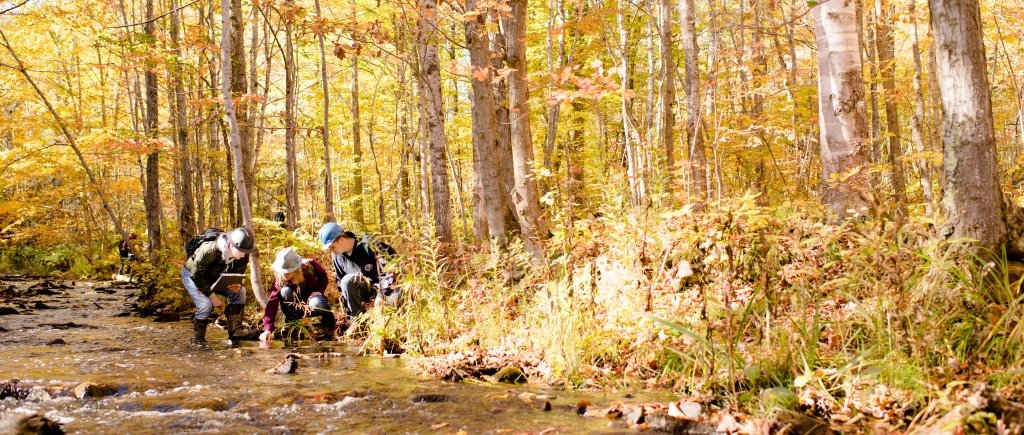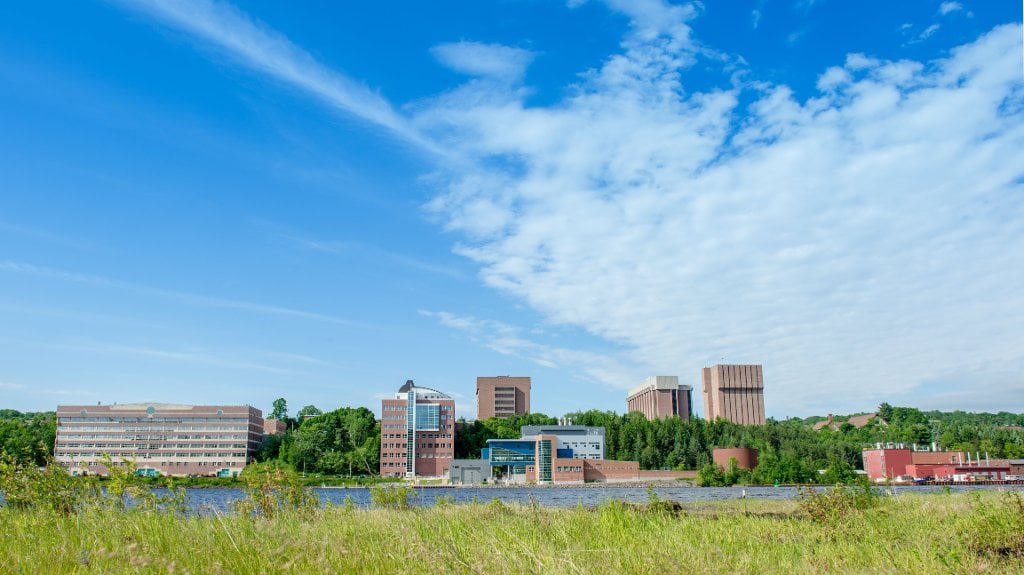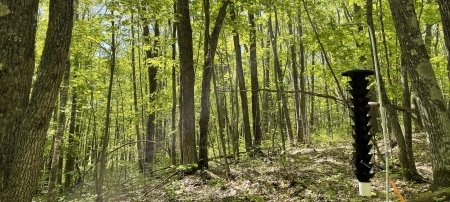Sixteen Michigan Technological University researchers and students shared their expertise last week at the 24th International Symposium on Society and Resource Management (ISSRM) in Utah.
ISSRM, organized by the International Association for Society and Natural Resources (IASNR), is a premiere conference for frontline research in sustainable management of natural resources, with a particular focus on the intersection of human and natural systems. Held this year in Utah’s Wasatch Mountain Range, ISSRM saw strong representation from Michigan Tech, with a total of 16 University researchers and students participating in paper sessions, panels, presentations and poster presentations.
“To have this level of University representation at ISSRM is a demonstration of the quality of research we’re doing at Michigan Tech,” says Kathy Halvorsen, a professor of natural resource policy. “Many of us are scientists who understand people. As society grapples with various environmental problems, it’s important to recognize how people cause and are affected by environmental issues.”
In addition to Halvorsen, presenting faculty included Mark Rouleau, assistant professor of social sciences; Chelsea Schelly, associate professor of sociology; Roman Sidortsov, assistant professor of energy policy; and Richelle Winkler, associate professor of sociology and demography.
Postdoctoral researchers Erin Pischke and Jennifer Dunn, as well as graduate students Sophia Ford, William Lytle, Mayra Morgan, Roland Ofori, Emily Prehoda and Jacob Slattery, also presented; Slattery provided a separate poster presentation. Graduate student Bethel Tarekegne, and undergraduates Neva Bentley and Kira Ferguson, offered poster presentations as well.
A natural leader
Halvorsen’s duties extended beyond presenting. As IASNR executive director, a role she assumed in January 2018, she made the opening remarks, and led council and member meetings during the symposium.
During her three-year term, Halvorsen, the first woman to serve as IASNR’s executive director, will work with the council and fellow officers to meet IASNR goals and provide for the needs of members, including professional development and publishing opportunities. She’ll also work with the executive officers, IASNR staff and council, and editors to ensure that conferences and the association’s journal—Society and Natural Resources—operate smoothly.
One of Halvorsen’s top priorities is to move IASNR toward a leadership that better reflects membership.
“We’re an international association,” Halvorsen says, “and I want to make sure our council more truly reflects our composition. We recently elected council members from Mexico and Denmark, and we now have a journal editor from Cyprus, our first non-US editor.”
Sharing research, and the road ahead
In Utah, Halvorsen helped facilitate two ISSRM sessions based on multinational research from the Partnerships for International Research and Education (PIRE) program, funded by the National Science Foundation (NSF). Over a five-year period, Halvorsen led a team of scientists from the US, Mexico, Argentina and Brazil to analyze the impacts of biofuel development on society and the environment with an aim to design regional, national and international policies that promote sustainable biofuel development and minimize its negative effects.
Michigan Tech students were also involved at the symposium, running ISSRM’s student forum, which offers professional development and networking for graduate students.
A few of them embarked on their ISSRM experience early, making the drive from Houghton to the Wasatch mountains in a rented van and sharing the highlights of their road trip on Twitter.
Most of the sixteen Michigan Tech researchers and students were already in Utah when flash floods devastated parts of the western Upper Peninsula on June 17. While the groups’ thoughts were with those at home, the storm’s impact also reaffirmed their commitment to studying our natural environment.
“The devastation brought by the flash floods in the Keweenaw served as a reminder,” says Sidortsov, “of the relevance of the University’s environmental and energy policy program, the ISSRM conference itself and the research that many faculty and students conduct at Michigan Tech.”
Michigan Technological University is an R1 public research university founded in 1885 in Houghton, and is home to nearly 7,500 students from more than 60 countries around the world. Consistently ranked among the best universities in the country for return on investment, Michigan's flagship technological university offers more than 185 undergraduate and graduate degree programs in science and technology, engineering, computing, forestry, business, health professions, humanities, mathematics, social sciences, and the arts. The rural campus is situated just miles from Lake Superior in Michigan's Upper Peninsula, offering year-round opportunities for outdoor adventure.






Comments